
Once you mention the phrase, “10 Must-Have-Flies”, that list is obviously going to be different depending on what you’re fishing for, when you’re fishing, where you’re fishing, weather conditions, water level, water clarity – and of course, who you ask. I think you understand – there are no “10 Must-Have_Flies” for anything. But there are of course flies you really should have and if you’re fishing trout and grayling, particularly in or around (but not restricted to) woods and wooded areas, an ant imitation is one of them.

Ants hibernate in the winter and become active as the sun heats up the colony. They begin roaming the surroundings for food – and they fall in the water. And trout and grayling like them. For me, once I begin seeing ants around the lakes and rivers I fish, the imitation is most often a get-out-of-jail-fly, one I use when I can’t figure out what a rising fish is eating. That they take my ant imitation is not proof they are eating ants – only that they found the imitation worthwhile eating. That’s good enough!

The red ants are particularly plentiful in pine forrests where their colonies can grow to 6 feet in diameter, up to 4-5 feet in height and contain over 100.000 ants. So while they are not big (the red ant males and queens, up to about 1cm) there are a lot of them.

A few weeks ago we wrote about the Vulgata-hatch as the high season for the stillwater fly fishers of Scandinavia. Another high season is when the ants that are going to form (or join) new colonies hatch and fly away. These are both males and females and are of similar size as the regular males in the colony (those that don’t fly away). They can fly in incredible numbers and some of them will inadvertently land on the water, often a little wind is good.
Trout and grayling are not late to take advantage. Most ants have trouble getting off the water again and are easy prey. Rises are not necessarily slow and gentle – it’s as if the fish know that the window to join the feast can be short.
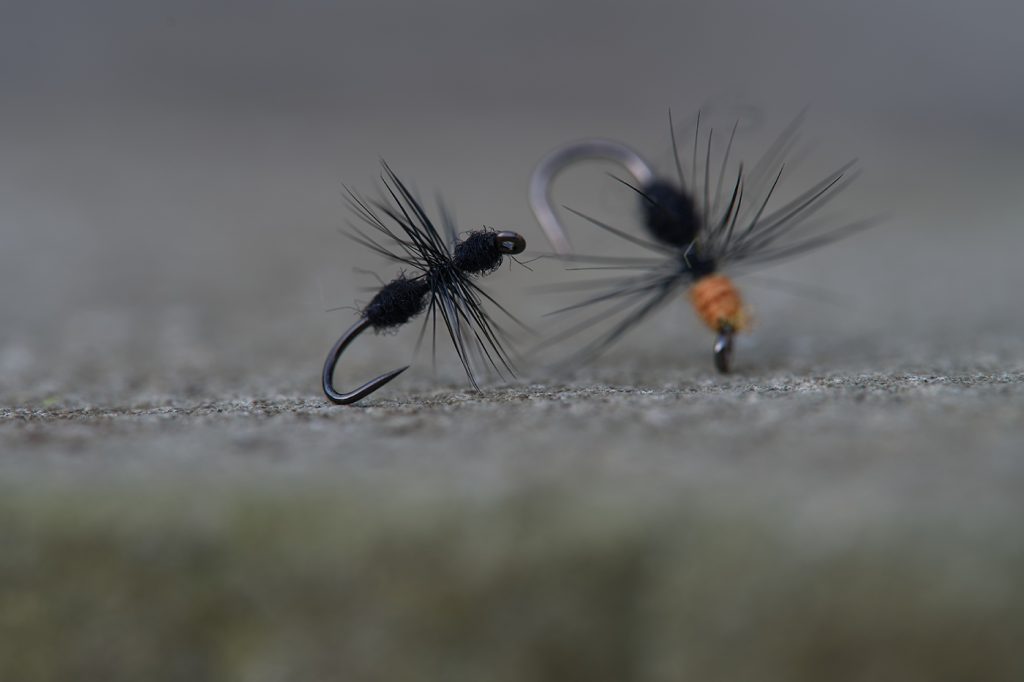
Just in Denmark there are over 50 species of ants, but there’s no need to go overboard. A black-orange imitation on a #12 hook and a black-black one on a #16 is all I ever use. The black-orange ones I also tie with wings. I keep the flies as simple as possible and they work very well. The only modification I might do is to trim the hackle underneath the fly so it sits flush in the surface. I like to keep the hackle fairly sparse, which does compromise float ability a little, but modern floatants (get it? Float ants… Dad Joke, I suppose) easily negotiate that issue.
The fly is so simple to tie that there’s really no need for a step-by-step, but just to direct your attention to a couple of details, I made one anyway.
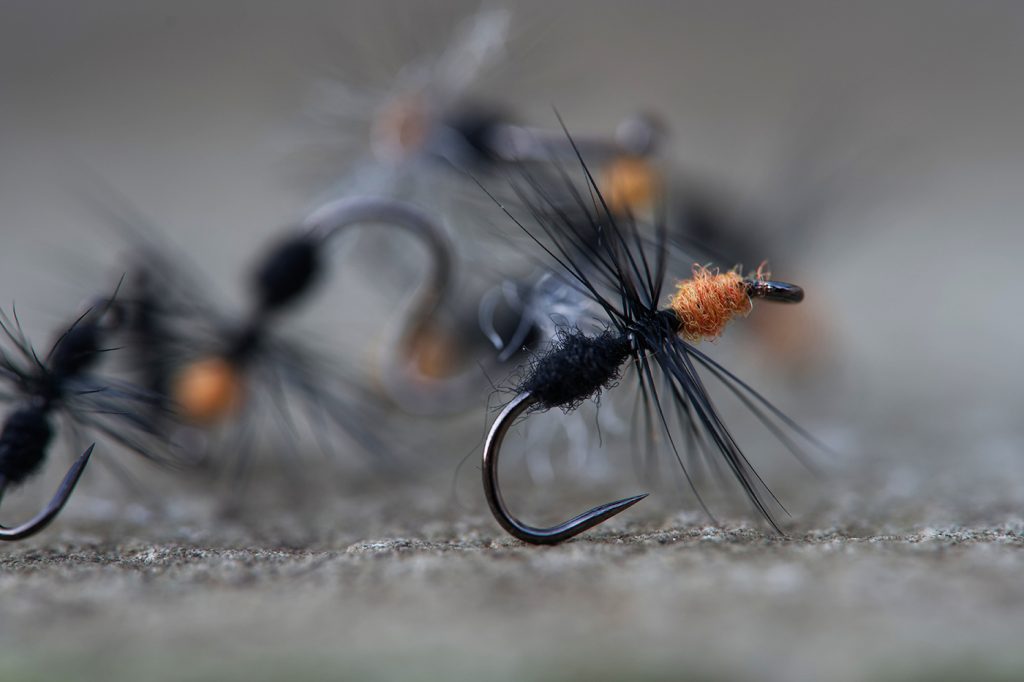

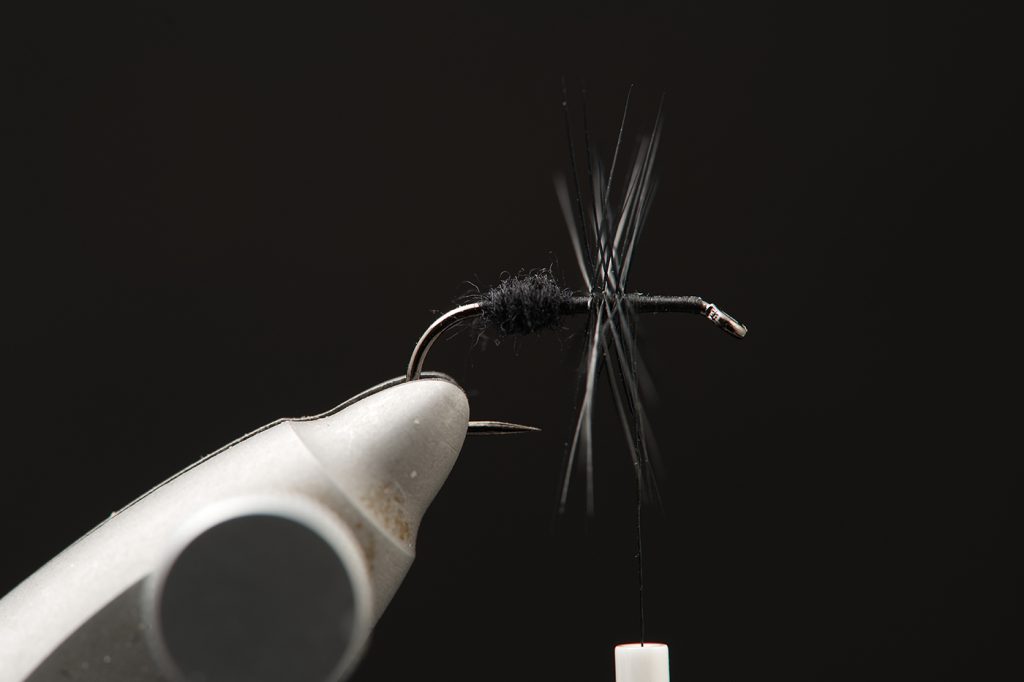
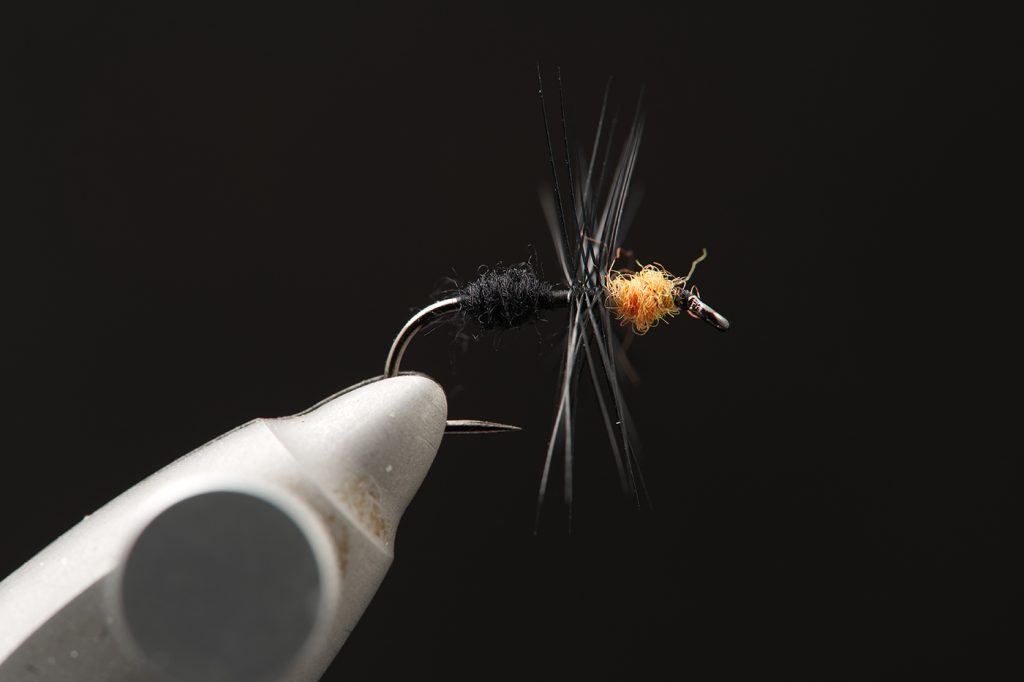
The clear distinction and size difference between abdomen and thorax are very apparent on the natural, so I offer a little attention to that when tying my flies.
Pattern:
Hook: Ahrex FW 501, #12.
Thread: Black 8/0.
Abdomen: Black FlyRite.
Hackle: Black cock hackle, 3-4 turns.
Thorax: Orange FlyRite.
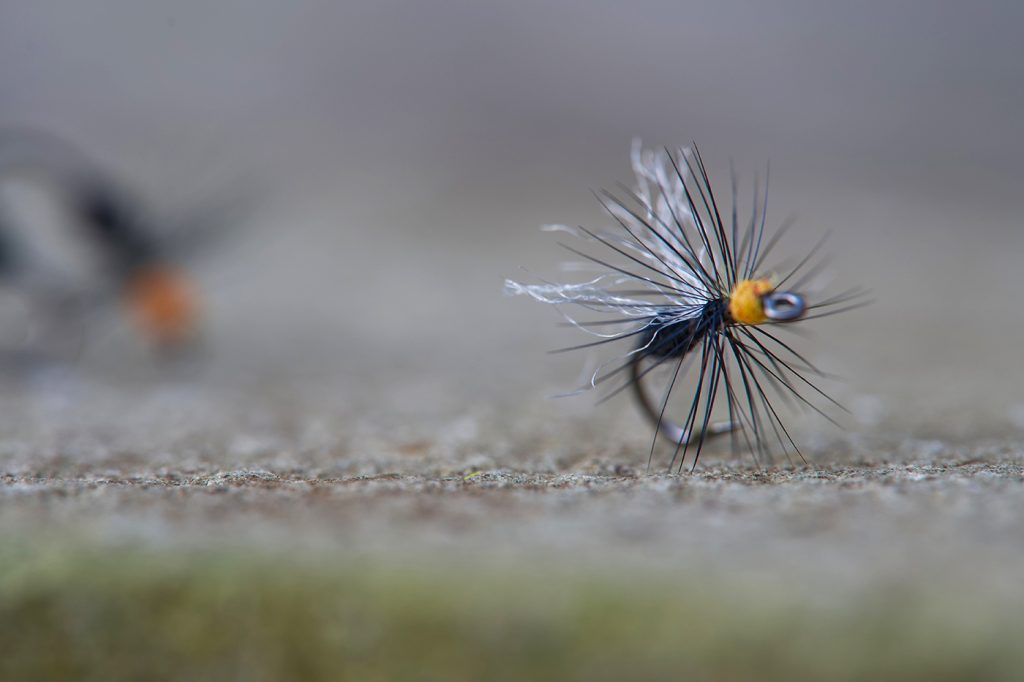
On the winged version I simply tie in a short piece of antron yarn before tying in the hackle. I tie my imitations of the smaller black ants on the same hook, only in size 16 and pay a little attention to the same distinction between abdomen and thorax as on the larger red ant.
